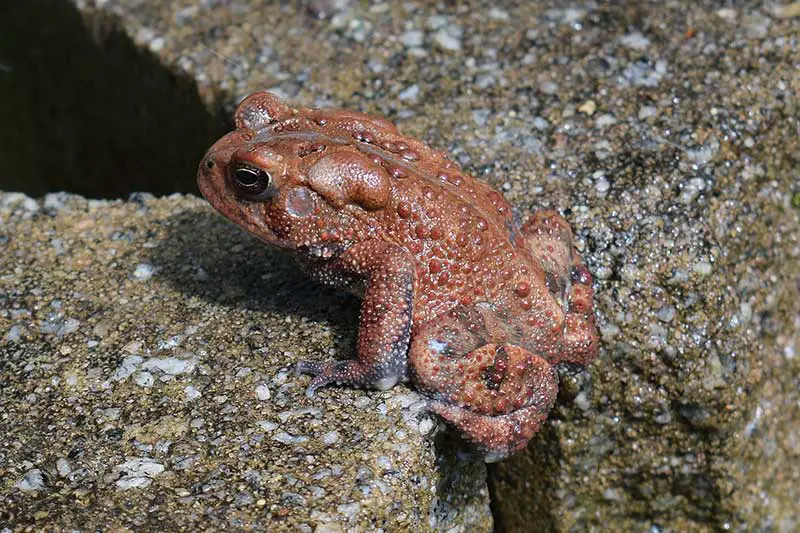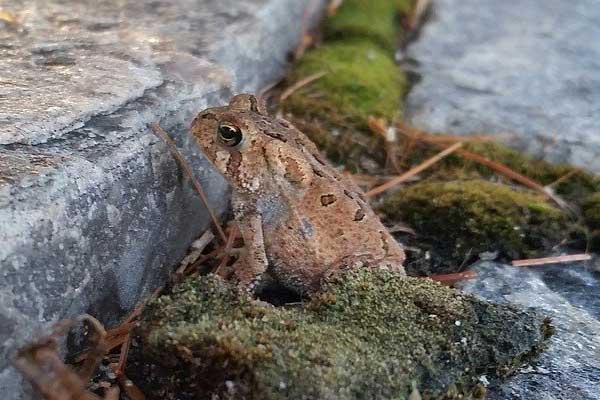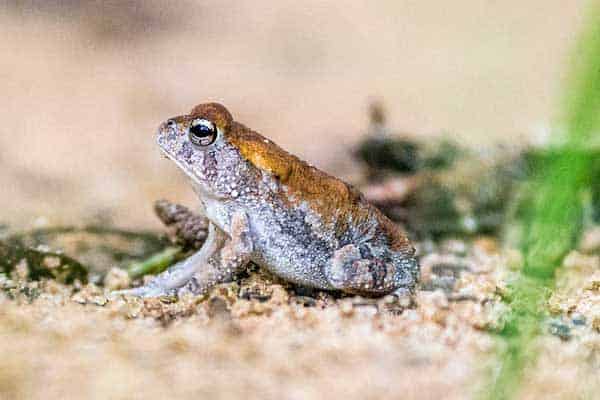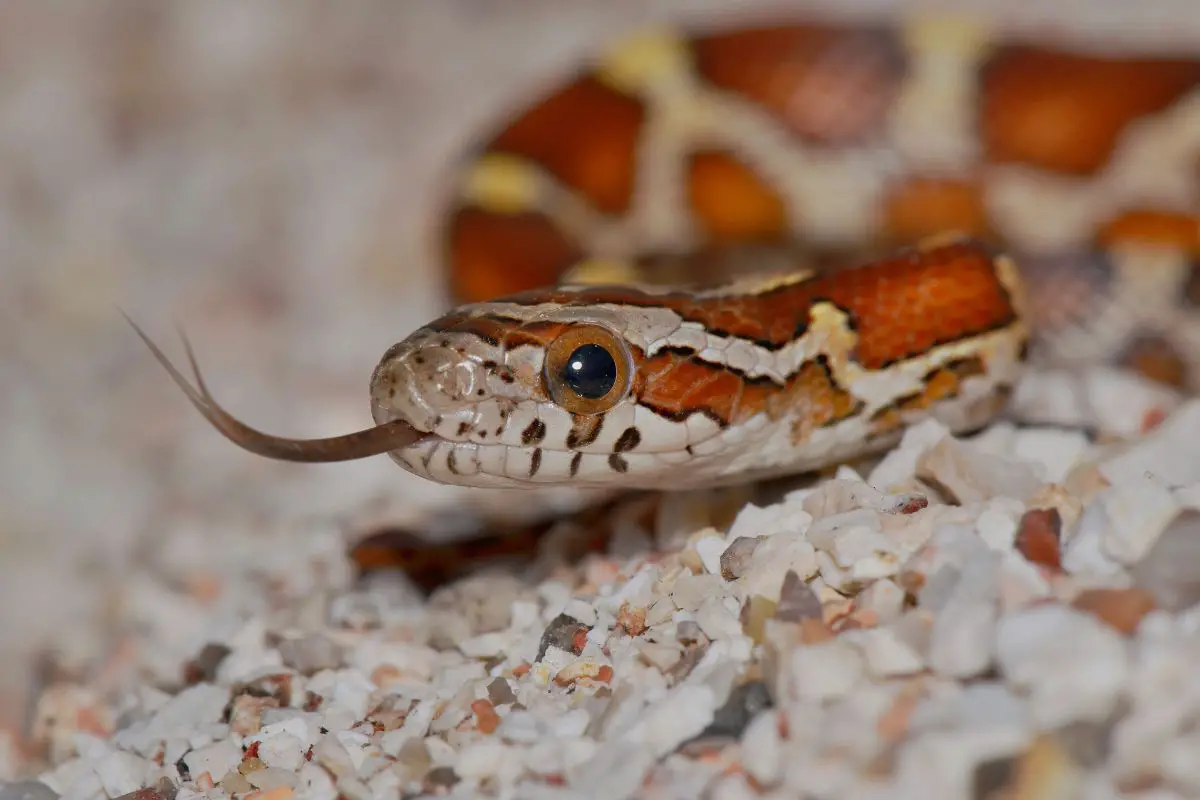Toads often get a bad rap thanks to the myth that touching one will give you warts. While this amphibian is known for its bumpy skin, it cannot cause warts to grow on others. What these toads in North Carolina can do, however, is help control insects in your garden and farm.
5 Toads In North Carolina
There are 31 species of frogs and toads in North Carolina, according to the North Carolina Wildlife Resources Commission, but only 4 of those are true toads.
You may, however, have noticed that despite there only being 4 toads in NC, there are 5 on our list. That is because the 5th is a toad-like creature that is often mistaken for its bumpy counterpart.
Now, let’s delve into the fascinating world of the toads of North Carolina. Understanding the distinctive features of these toad species enhances our appreciation for the rich biodiversity present in the state.
1. American Toad

Scientific Name: Anaxyrus americanus
The American toad is the largest of all the toads in North Carolina. They can reach lengths of over 3” and weigh almost 3 ounces. Their coloring varies, but they will have warty, dry skin in hues of gray, tan, red, olive, or brown. The pattern covering their body will also vary in size and shape of spots and mottling.
While it is sometimes mistaken for the Fowler’s toad, the American toad will have enlarged warts on each leg, near the lower section, as well as only 1 or 2 warts on its back. These back warts will also have a dark spot on them.
American toads are found in the Piedmont and mountain regions of North Carolina’s Coastal Plain. You will typically find them breeding in pools of water in wooded areas, but they can sometimes breed in shallow rivers, ponds, and puddles.
Like other toad species, the American toad has a gland filled with a poisonous substance that it uses as a defense mechanism against predators trying to eat it.
This liquid is non-lethal to humans, although you should always wash your hands after handling any toad or frog since their secretions can cause skin irritation.
2. Fowler’s Toad

Scientific Name: Anaxyrus fowleri
Fowler’s toads look similar to the American toad in many ways. They can have the same body coloring, such as tan, olive, red, gray, or brown, but may also have a greenish hue.
Their spotted pattern is also typically much more vibrant than that of the American toad. Another difference between the two are the size and number of warts. Unlike the American toad, the Fowler’s toad has smaller warts on its legs and more warts on its back.
Fowler’s toads are most common in the Piedmont region of North Carolina, but can also be found in the mountains and coastal plains of the state. These mostly nocturnal creatures breed in permanent water and are usually not bothered by fish living in the same habitat.
Like the American toad, the Fowler’s toad contains a poisonous substance that it uses to defend itself against predators. This substance isn’t lethal to humans or pets. If, however, your pooch decides to mess with the toad, they could experience vomiting and drooling caused by the foul-tasting secretion.
3. Oak Toad

Scientific Name: Anaxyrus quercicus
The oak toad is the smallest toad species found in North Carolina, reaching lengths of only about 1-inch. They are gray, brown, or black with red-colored warts covering their bodies. One way to identify this toad is by its orange, white, or yellow stripe that runs from its snout all the way down its back. Because oak toads are so small, they are often mistaken for the juveniles of other toad species.
This toad species is found in North Carolina’s coastal plain, where it prefers wooded areas filled with pine trees, sandhills, savannas, and shrub bogs. They are active during the day, and breed in temporary bodies of water, such as ponds, flooded fields, and ditches.
4. Southern Toad

Scientific Name: Anaxyrus terrestris
Southern toads have a similar appearance to the Fowler’s toad and the American toad, though the large knobs found on its cranial crests help to distinguish this toad species from the others. Most often, the Southern toad will have a gray, tan, brown, black, or red body that is covered in warts.
The Southern toad measures about 2 ½-inches in length and is found in the Coastal Plain region of North Carolina. While they will use permanent bodies of water to breed in, they prefer temporary water, such as puddles and ditches.
5. Eastern Narrow-Mouthed Toad

Scientific Name: Gastrophryne carolinensis
Despite it having the word “toad” in its name and having a toad-like appearance, the Eastern narrow-mouthed toad is actually not a toad. It is a small, plump frog often mistaken for a toad.
This not-a-toad is rather small, with adults averaging about 1-inch in length. It’s plump body ranges in color from reddish brown to grey and its small head has a triangular shape.
The Eastern narrow-mouthed toad is found only in the Piedmont and Coastal Plain regions of North Carolina. These nocturnal animals hide during the day under logs, leaves, and various other debris found in moist areas.


